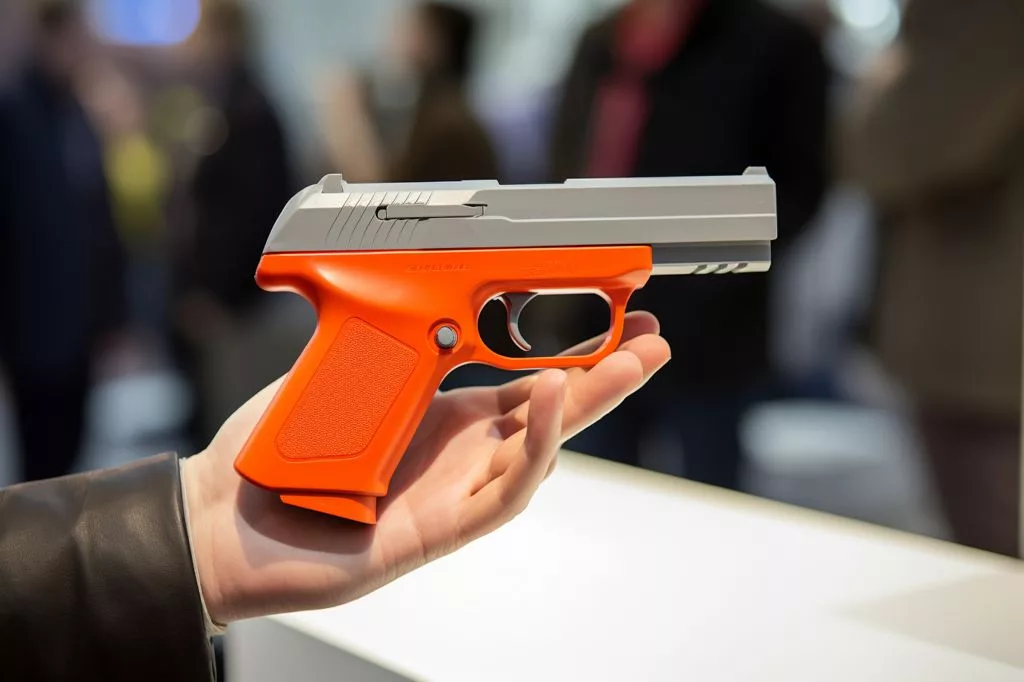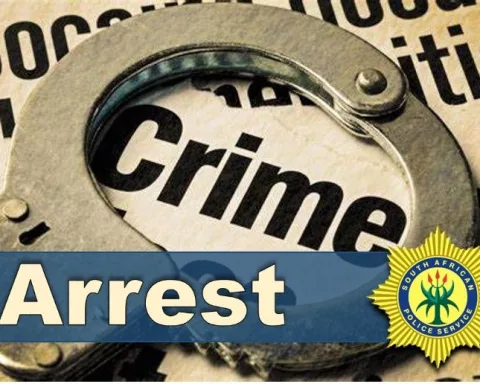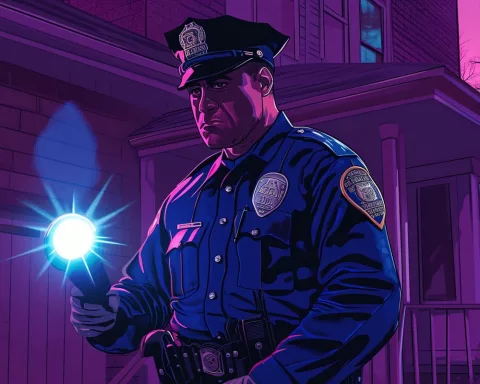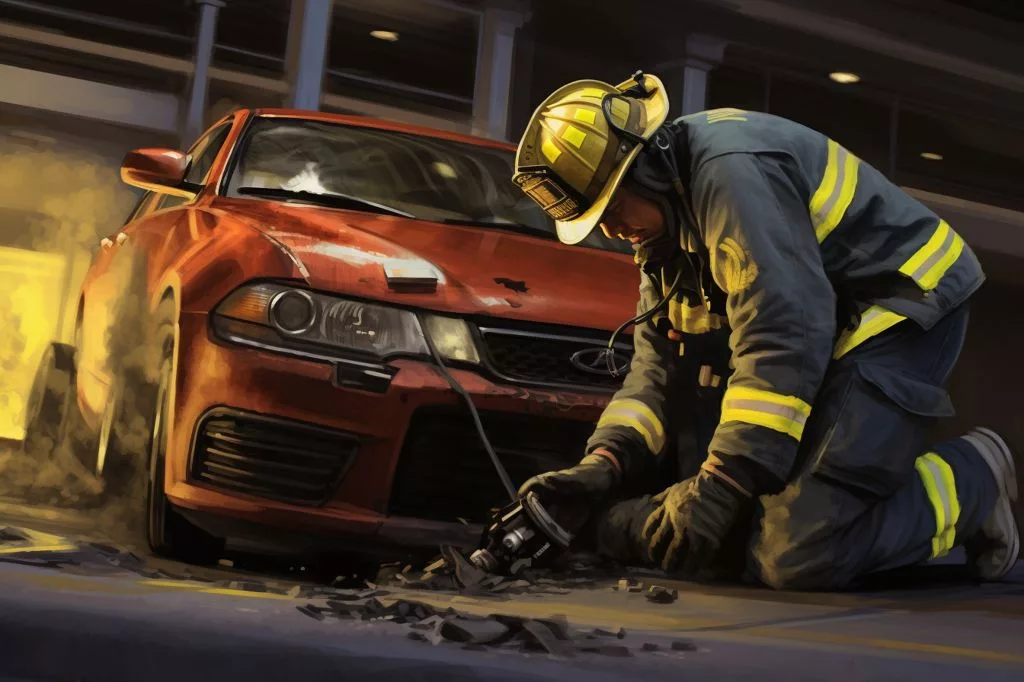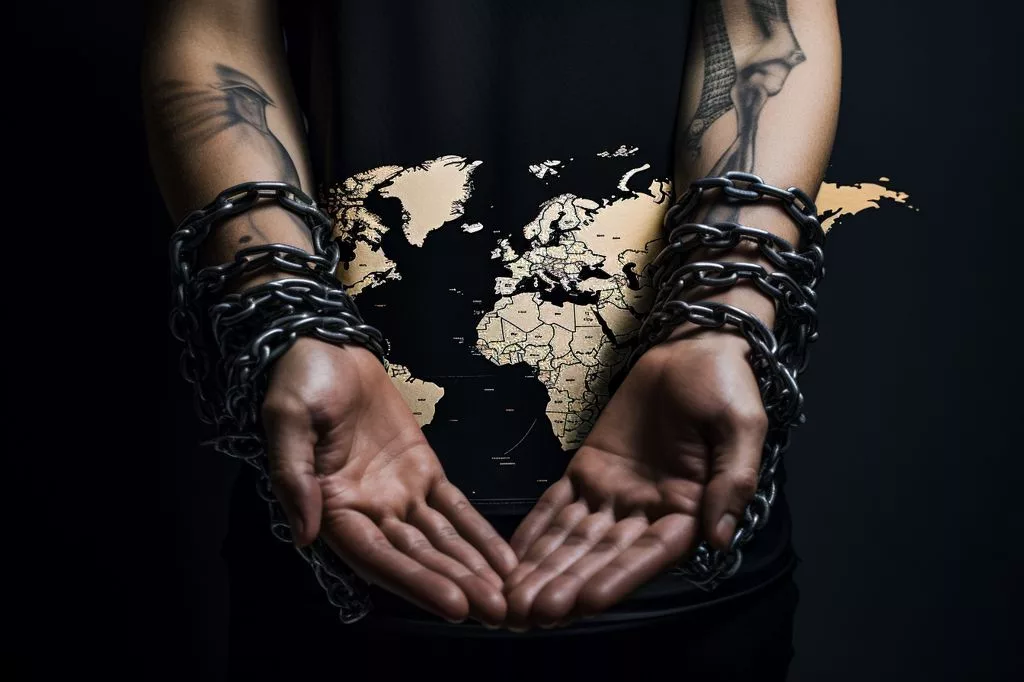In Muizenberg, South Africa, law enforcement officers responded to an attempted hijacking and apprehended three suspects, one of whom was carrying an imitation replica firearm that was difficult to distinguish from a real weapon. This incident highlights the challenges faced by officers in discerning between genuine and counterfeit firearms, and the urgent need for better national legislation to criminalize the possession of fake weapons without visible indicators. The bravery and dedication of the officers involved should be commended in the face of growing danger posed by imitation firearms in criminal activity.
What are the challenges posed by imitation firearms in criminal activities?
Imitation firearms can be alarmingly realistic, making it difficult for law enforcement officers to distinguish them from genuine firearms during violent situations. Officers must assume the weapon is authentic and react accordingly to protect themselves and others. The current legislation criminalizes their use in criminal acts, but not their possession, highlighting the urgent need for better national legislation. Suggested amendments would criminalize the possession of counterfeit firearms without clearly visible indicators, such as painting the barrel’s end bright orange.
A Frightening Encounter in a Coastal Suburb
In the lively coastal area of Muizenberg, South Africa, three suspects were caught following an unsuccessful attempt to hijack a motorcyclist. This event happened on the side of Prince George Drive, where city law enforcement officers reacted swiftly upon witnessing the crime in progress during their regular patrol. Mayco member for safety and security, JP Smith, shared the chilling experience on Facebook, outlining the rapid response of the officers that resulted in the criminals’ arrest.
The thrilling pursuit started when officers observed the attempted hijacking, quickly exited their vehicle, and chased the suspects on foot. The officers called for reinforcements, escalating the search for the dangerous culprits. They ultimately managed to arrest one of the suspects and found that his firearm was actually an imitation replica. Further interrogation led the officers to the second suspect, who was hiding under a bed, while the third suspect was apprehended shortly after.
Now, the three individuals are facing charges of attempted robbery, with one suspect also being charged with armed robbery. This event highlights concerns about the growing usage of imitation firearms in criminal activities. Smith states that these counterfeit weapons are alarmingly realistic, even emitting loud noises resembling real gunshots when fired.
The Challenges Posed by Imitation Firearms
Smith highlights the inherent risks of distinguishing between genuine and counterfeit firearms when discussing the difficulties faced by law enforcement officers in such scenarios. Officers are often unable to confirm the authenticity of the weapon without conducting a manual examination. Confronted with violent situations, they must assume the firearm is authentic and react accordingly to protect themselves and others. In this particular instance, the officers were fortunate to arrest the suspect without firing any weapons.
These occurrences underscore the urgent need for better national legislation regarding imitation firearms. The current legislation criminalizes their use in criminal acts, but not their possession. The Portfolio Committee is considering amendments to the Streets by-law in response to this legal gap.
These suggested amendments would criminalize the possession of counterfeit firearms without clearly visible indicators, such as painting the barrel’s end bright orange, similar to guidelines already implemented in some regions around the world. These modifications strive to alleviate the challenges confronted by law enforcement officers when encountering such weapons in their line of duty.
Commending the Officers’ Bravery and Commitment
Amid the turmoil of the Muizenberg event, the courage and dedication of the officers involved should not be overlooked. Smith commends their vigilant and courageous approach, risking their lives to protect an unknown individual from harm. Their unwavering commitment to their duties has earned the directorate a well-deserved reputation as one of South Africa’s most respected law enforcement agencies.
As the incidence of counterfeit firearms in criminal acts continues to grow, the necessity for legislative action becomes more apparent. The Muizenberg incident serves as a stark reminder of the dangers faced by law enforcement officers daily, highlighting the significance of their vigilance and commitment to protecting the community. Policymakers must address this mounting concern, ensuring the safety of officers and citizens alike.
1. What happened in Muizenberg, South Africa that involved replica firearms?
Law enforcement officers responded to an attempted hijacking in Muizenberg, South Africa, and apprehended three suspects, one of whom was carrying an imitation replica firearm that was difficult to distinguish from a real weapon.
2. Why is it challenging for officers to distinguish between genuine and counterfeit firearms during violent situations?
Imitation firearms can be alarmingly realistic, making it difficult for law enforcement officers to distinguish them from genuine firearms during violent situations. Officers must assume the weapon is authentic and react accordingly to protect themselves and others.
3. What is the urgent need for better national legislation?
The urgency for better national legislation is to criminalize the possession of fake weapons without visible indicators, such as painting the barrel’s end bright orange, to enable officers to distinguish between counterfeit firearms and real weapons.
4. What charges are the three individuals who attempted the hijacking in Muizenberg facing?
The three individuals are facing charges of attempted robbery, with one suspect also being charged with armed robbery.
5. What are the risks of distinguishing between genuine and counterfeit firearms?
Officers are often unable to confirm the authenticity of the weapon without conducting a manual examination. Confronted with violent situations, they must assume the firearm is authentic and react accordingly to protect themselves and others.
6. How can the law address the legal gap of possessing counterfeit firearms?
Suggested amendments would criminalize the possession of counterfeit firearms without clearly visible indicators, such as painting the barrel’s end bright orange, similar to guidelines already implemented in some regions around the world.
7. What has earned the directorate a well-deserved reputation as one of South Africa’s most respected law enforcement agencies?
The courage and dedication of the officers involved in the Muizenberg incident have earned the directorate a well-deserved reputation as one of South Africa’s most respected law enforcement agencies.
8. What is the significance of the vigilance and commitment of law enforcement officers in protecting the community?
The Muizenberg incident serves as a stark reminder of the dangers faced by law enforcement officers daily, highlighting the significance of their vigilance and commitment to protecting the community. Policymakers must address this mounting concern, ensuring the safety of officers and citizens alike.

